UP AND DOWN THE MONOCHORD: Seven Vowels—Seven Planets [Part II]
by Maria Danova, Independent Scholar
“Cultures have long heard wisdom in non-human voices:
Apollo, god of music, medicine and knowledge, came to Delphi in the form of a dolphin.
But dolphins, which fill the oceans with blipping and chirping, and whales, which mew and caw in ultramarine jazz—a true rhapsody in blue—are hunted to the edge of silence.”
–Jay Griffiths, British writer
Most of the sources concerning Pythagoras claim that he traveled extensively and was initiated in almost every kind of mystery available at the time: the Eleusinian Mysteries in Greece, the Mysteries of Isis in Egypt, the Babylonian mysteries, and even the Brahmanic Mysteries at Elephanta and Ellora, India, all of which taught one supreme truth—there is only One God. Therefore, the true origin of his infinitely deep knowledge is most likely the ancient esoteric schools, and it is based on this knowledge, gained through initiation and study, that he formed his doctrine and founded his own initiatory school. As an initiate and Master, he always wore a white robe, representing the purity of a ritual and contributing to his reputation as a divine being; the closest circle of his disciple had the same clothes.

Fyodor Bronnikov, Pythagoreans celebrate sunrise (Pythagoreans’ Hymns to the Rising Sun), 1869, Tretyakov State Gallery
They started and rounded off each day with music (at the time, there were no chords, i.e., simultaneous striking of several notes, and, for all we know, this music was played as a single melody); they chanted sacred sounds, meditating and bringing their souls into perfect harmony:
“…at night when his disciples went to sleep, he delivered them from all the noises and troubles of the day, and purified the perturbations of their minds, and rendered their sleeps quiet with good dreams and predictions. And when they rose again from their beds, he freed them from the drowsiness of the night, from faintness and sluggishness, by certain proper songs, either set to the Lute or some high voice.” [1]
The depiction of the angelic song and dance in Milton’s epic 17th century poem Paradise Lost could be seen as indirectly describing this Pythagorean way of life:
“That day, as other solemn days, they spent
In song and dance about the sacred hill,
Mystical dance, which yonder starry sphere
Of planets and of fixed in all her wheels
Resembles nearest mazes intricate,
Eccentric, intervolved, yet regular
Then most, when most irregular they seem;
And in their motions harmony divine
So smooths her charming tones, that God’s own ear
Listens delighted.”
Pythagoras taught that the human soul, just as the whole world, is created according to musical laws and should be tempered accordingly. This tradition is still preserved by Rosicrucians who chant sacred vowels in a certain order and Kabbalists who engage in sound meditation connected with the Sefirot Tree (the tradition that stems from Rabbi Ibrahim Abulafia, 13th century) [2], thus also harmonizing different levels of their being. In keeping with this, it was said that Pythagoras used to cure people with sound and music. As Diogenes writes, “he used to practice divination by sound or voices…”
*
The tradition of chanting vowels is very ancient. As Melanie Braun writes in her article on the mystical implications of vowel intonations, “in ancient Egypt, the laws of music were even engraved on the temple walls. The Egyptians took the seven vowels from the Oriental languages and used them as musical characters. Invocations to the seven planets were composed of vowels and designated musical modes.” According to Manly P. Hall, one of the sacred Egyptian hymns contained the following invocation: The seven sounding tones praise Thee, the Great God, the ceaseless working Father of the whole universe. And in another hymn, the Deity describes Himself thus:
“I am the great indestructible lyre of the whole world, attuning the songs to the heavens.”
Most of the known sources, including Plato, point to the fact that the practice of vowel incantations derived from Egypt. In Plato’s Philebus (section 18 b), “Theuth”—known as the Egyptian deity Thoth, is mentioned as “some god, or divine man” who first divided the sounds of human speech into three categories: mutes, semi-vowels, and vowels. [3] And in Demetrius’ De Elocutione (late Hellenistic or early Roman period) the following reference is found:
“In Egypt the priests, when singing hymns in praise of the gods, employ the seven vowels, which they utter in due succession; and the sound of these letters is so euphonious that men listen to it in place of aulos and cithara.” [4]
Analogously, “in Kabbalistic study, it is taught that Hebrew letters and words are elements of power” able to reach the Deity. [5] As Jamie James and Anthony Westbrook state, the Ancient world existed within the framework of a unified intellectual continuum stretching throughout Asia, even into China, thus it is no wonder that the Greeks shared the same beliefs regarding the seven sacred vowels and their correspondence with the planetary gods.
Pythagoreans, too, associated vowels with planets and, moreover, believed that each of the planets had a certain velocity produced by its oscillation. For instance, the Pythagorean Nichomachus of Gerasa (late 1st to early 2nd centuries C.E.) in his Manual of Harmony wrote that vowels symbolized “the primary sounds emitted by the seven heavenly bodies”:
“And the tones of the seven spheres, each of which by nature produces a particular sound, are the sources of the nomenclature of the vowels. These are described as unpronounceable in themselves and in all their combinations by wise men since the tone in this context performs a role analogous to that of the monad in number, the point in geometry, and the letter in grammar. However, when they are combined with the materiality of the consonants just as soul is combined with body and harmony with strings – the one producing a creature, the other notes and melodies – they have potencies which are efficacious and perfective of divine things.” [6]

Nicomachus (right) and Plato in a 12th c. manuscript, Cambridge University Library. Plato revered Pythagoras as a great teacher, but, curiously, almost never mentioned his name in his works – perhaps because he owed him so much of his knowledge; he bought the book containing the compilation of Pythagoras’ wisdom from the Pythagorean Philolaus. His dialogue “Timaeus” is largely based on the Pythagorean doctrine, although understood in Plato’s own way.
This theory of sound-planetary correspondences is even confirmed by modern science:
Exploring the first moments of the Universe, cosmologists then had a startling revelation: the primeval plasma was crossed by waves similar to those produced by sound in the air—ripples propagating in space, a rich choir accompanying cosmic evolution. The disturbance produced in the plasma by perturbations of different size traveled as waves of different frequency. Perturbations of larger extent produced slower oscillations—lower frequencies, deep and low tones. [7]
The seven vowels of the Greek alphabet, in their planetary correspondence, are:
A (alpha, a) = 1st heaven;
E (epsilon, short e) = 2nd heaven;
H (eta, long e) = 3rd heaven;
I (iota, i) = 4th heaven;
O (omicron, short o) = 5th heaven;
Y (upsilon, u) = 6th heaven;
Ω (omega, long o) = 7th heaven.
According to this concept, between the Alpha and Omega lies the whole gamut of phenomenal world, and these 7 vowels represent a perfect circle and perfect harmony [8]:
“When these seven heavens sing together they produce a perfect harmony which ascends as an everlasting praise to the throne of the Creator. <…> The seven strings were always related both to their correspondences in the human body and to the planets. The names of God were also conceived to be formed from combinations of the seven planetary harmonies.” [9]
*
The number 7 was and still is considered a powerful, beneficial number. When ancient astronomers observed the planets discernible to the naked eye, they discovered that they were seven in number, and many ancient religions were based on the veneration of this number. In Jewish religion, they were the archangels Michael, Gabriel, Raphael, Samael, Uriel, Amiel, Zadkiel. To the Babylonians, the seven planets were the seven gods—Shamash, the Sun; Sin, the Moon; Nebo, Mercury; Ishtar, Venus; Nergal, Mars; Marduk, Jupiter; and Ea, Saturn. [10]
It is indeed interesting to imagine how Pythagoras passed the initiations in Babylon, directly corresponding to the number 7. The images become especially vivid when we read the description of the ancient seven-level temples of the Babylonian religion in Higgins’ Beginning of Masonry:
Their disposition from the bottom up was that of the planets in their respective order of velocity. Saturn, the slowest, was represented at the bottom by a black chamber; then came an orange-hued Temple for Jupiter, then a red one for Mars. Above this was the Temple of the Sun covered with plates of gold, then that of Venus, of a pale yellow color, and the last of the initiations took place in the literally Blue Lodge, dedicated to the planet Mercury, of whom the old rituals told us that the three lesser lights were “the Sun, the Moon, and Mercury.” Above this was the silver-covered Temple of the Moon god, where the fully initiated hierophant took his place among the astronomers who studied the heavenly bodies from this elevated Middle Chamber. [11]

Babylonian temple with seven levels, from: Higgins, Frank C. The Beginning of Masonry, New York, 1916 : 57
In view of this magnificent image, we should recall Goethe’s famous words “architecture is frozen, or crystallized, music”. Being a Freemason, a highly advanced initiate, and “Gesamtwesen” (a kind of universal being), in this phrase he hinted at the ancient concept of correspondences between music and architecture. As Manly P. Hall writes in his survey of the Pythagorean doctrine in The Secret Teachings of All Ages, in Ancient Greece “the elements of architecture… were considered as comparable to musical modes and notes, or as having a musical counterpart. Consequently when a building was erected in which a number of these elements were combined, the structure was then likened to a musical chord, which was harmonic only when it fully satisfied the mathematical requirements of harmonic intervals.”
*
Our Western musical system, indebted to the antique one, with its 7 notes and 7 musical modes (Ionian=the major scale, Dorian, Phrygian, Lydian, Mixolydian, Aeolian=the minor scale, Locrian), is to this day primarily based on the seven notes Do (Ut, C), Re (D), Mi (E), Fa (F), Sol (G, notice the resemblance to the name of the Sun – Sol), La (A), Si (H, or B).
These seven notes form a framework for countless variations and combinations, the possibilities of which seem truly inexhaustible. The very names of these notes were introduced by the Benedictine monk and musician Guido d’Arezzo (ca.991-1033) and are based on the seven initial syllables of the Hymn to St. John written in Latin (Ut queant laxi resonare fibris, Mira gestorum famuli tuorum, Solve polluti labii reatum, Sancte Ioannes / So that your servants may, with loosened voices, resound the wonders of your deeds, clean the guilt from our stained lips, O Saint John). The names of the notes also have semantic significance: do – dominus (God), re – rerum (matter), mi – miraculum (miracle), fa – familias planetarium (solar system), sol – solis (Sun), la – lactea via (Milky Way), and si – siderae (heavens). Thus, the sacred character of music is preserved in the very names of the sounds that are the “atoms” forming the body of music, and music works can still be seen as prayers to the deity, at times trying to imitate the heavenly sounds.
Hymn to St.John
This imitation was, as far as we know, one of the aims of the daily musical practice of the Pythagoreans. The heavenly sounds—the music of the spheres—could be only heard by the Master, who then brought this knowledge to his disciples in an accessible form: “he [Pythagoras] framed some representations of these sounds to exhibit them as much as was possible, imitating (that music) chiefly by instruments or the voice alone.” [12]
Later in history, Johannes Kepler (1571-1630), following the Pythagorean tradition, claimed that he knew exactly how the spheres sounded:
“Planets that moved in circular orbits, like Venus, kept one tone. Planets that moved in eccentric orbits, like the moon and Mars, created arpeggios. Rapid planets, like the moon, moved in semi-quavers. Slow movers, like Saturn, moved in breves. Kepler believed that the planets also had specific intervals based on the difference between the maximum and minimum angular speeds of the various planets when measured from the sun. In other words, the closer to a circle around the sun the orbit is, the closer it is to a unison at each end of the orbit. Earth’s interval, whose orbit is very nearly a circle but not quite, in a semitone: mi to fa. (He also glossed the names of these pitches theologically by suggesting that they also stood for the words “misery” and “famine”—our lot on earth). Venus is almost a perfect circle and therefore the interval for Venus is a quarter tone. Thus do the orbits of the planets eventually build up a cosmic chord.” [13]

Visual representation of near unison made by a scientific instrument called Harmonograph, an invention attributed to a Professor Blackburn in 1844. From Aston, Anthony. Harmonograph: A Visual Guide to the Mathematics of Music, 2003 : 23
*
We may wonder, who, according to the Pythagoreans, “ruled” the system of divine harmony briefly outlined above? Who tuned the velocity of the heavenly bodies? Who, thus, was the master and player of the world lyre? Naturally it was Apollo, the supreme deity of harmony, order, and the arts.
Diogenes writes that “the only altar at which he [Pythagoras] worshiped was that of Apollo the Giver of Life,” obviously without any animal sacrifice, since the Pythagoreans were strict vegetarians. Apollo, whose cult was most prominent in Ionia, Pythagoras’ homeland (he was born on the island of Samos, one of the islands of the Ionian League) was associated with the SUN:
“the Sun is the leader of the choir of planets, and Apollo’s lyre a symbol of the harmony of the spheres.” [14]

Onorio Marinari, Apollo, half-length, holding a lyre, ca. 1686, collection unknown (?)
All in all, as Jacqueline Behling writes, although his origin remains a mystery, “Apollo is commonly considered as the ‘most Greek’ of all the gods of Greece”. Still, it is more than possible that this deity was actually of non-Greek origin: it was a common notion that he came from the North; according to another concept, he was the Greek embodiment of the Egyptian god Horus.
In her work on Apollo and Pythagoreanism, Behling calls Pythagoras Apollo’s “most prominent non-priestly advocate”:
“While earning credit for major early contributions to mathematics and geometry as well as philosophy, he identified himself closely with Apollo, as either a messenger or perhaps an avatar of the god.” [15]
According to Pythagoras, who was also considered a son of the god [16], Apollo represented the higher principle setting the orderly framework (net) of the universe, “an impersonal principle of…higher reality” (Behling). In many Renaissance depictions of the world as a system organized according to harmonious laws, Apollo presides above the so-called “world monochord,” stretching the cord of the whole creation, as in this well-known drawing from Franchino Gaffurio’s treatise Practica musicae, 1518 [17]:
As we can see, Apollo is situated above and, in fact, outside the system comprised of the basic elements (water, earth, fire, air), planets, the sphere of the fixed stars, each corresponding to a certain muse and a certain ancient Greek musical note and mode, and rules the time itself, shown in the form of the three-headed serpent, Chronos. Here, Apollo is depicted as “a personification of the regulating, harmonizing forces in the universe, and as such is aptly associated with music, in which these forces are made audible.” [18]
Although it was believed that the supreme God resided high above, the music of the spheres tuned by him and “performed” by the heavenly bodies in their motion and interaction still affected everything that existed below, regardless of human ability to hear it. Pythagoras was one of those very rare men on planet Earth who was able to discern those sounds and correctly interpret the astrological influences effected through them. Thus, he existed as if between two worlds, between Above and Below.
It is humanity’s great luck that he was also generous enough to share his perception of this divine harmony with others. In this way, first his disciples and, over the course of the centuries, many other scientists and laymen became aware of the existence of these heavenly harmonies, even if they could not always actually hear them.
Science has come so far as to actually record some of the sounds produced by the planets, by way of registering regular impulses occurring in plasma. For the opportunity to actually hear these sounds today we are also indebted to Pythagoras. For without him, the very idea of the existence of such cosmic music might have not occurred at all, or its development might have been delayed by several centuries.
NASA Symphonies of the Planets 3, 1992
*
NOTES:
[1] Stanley, Thomas. Pythagoras: His Life and Teachings. A Compendium of Classical Sources. (From the 1687 edition of The History of Philosophy). Preface by Manly P. Hall. Lake Worth, Fl.: Ibis Press, 2010
[2] On this subject, see: Idel, Moshe. Mystical Experience in Abraham Abdulafia; esp. Chapter 2: Music and Ecstatic Kabbalah. SUNY Series in Judaica, State University of New York Press, 1988
[3] “Thoth himself was shown on the Temple Wall at Karnak in the act of ‘stretching the cord,’ which is the act of moving from a spiritual center outwards in order to create forms in the physical 3-dimensions of space; the great hermetic Egyptologist Schwaller de Lubicz labeled this Temple illustration ‘Thoth, Master of the Net.” From: Gilbert, Robert J. “The Hidden Energy Science of Sacred Geometry: Ancient Traditions and Recent Breakthroughs”, Spirit of Maat Webzine, March 2008
[4] Godwin, Joscelyn. The Mystery of the Seven Vowels in Theory and Practice. Grand Rapids, MI: Phanes Press, 1991: 22-23
[5] Braun, Melanie. “Exploring the Efficacy of Vowel Intonations.” The Rose+Croix Journal, 2005, Vol. 2 : 13
[6] Godwin, Joscelyn. The Mystery of the Seven Vowels… : 23-24
[7] Balbi, Amedeo. The Music of the Big Bang: The Cosmic Microwave Background and the New Cosmology. Berlin, Heidelberg : Springer-Verlag, 2008 : 91
[8] Here is a brief overview of many other objects that also come in seven, since seven is a sacred number partaking crucially in the structure of the universe: “The seven vowels, primary colors, notes of music, metals, days of the week, liberal arts, rounds of the spiritual ladder or staircase, deadly sins, sorrows of the Virgin Mary; the seven rays or Heptaktis of Jao Sabaoth among the Chaldeans; the seven rays of Indra in Hindu Mythology; the seven stars of the Pleiades, in Taurus; the Seven Ages of Man, not invented by Shakespeare, but quoted by Solon, the Athenian lawgiver, and by the school of Hippocrates; the seven Hyades, the seven stars of the Great Bear, forming a Swastika, in which the Hindus placed their seven Rishi or sages of primitive wisdom; seven wonders of the world; seven reeds to Pan’s pipe; seven strings to Apollo’s Lyre; seven gifts of the Holy Ghost; seven champions of Christendom; seven sleepers of Ephesus; seven Amshaspands of Persian theology, and seven Heavens.” – Higgins, Frank C. The Beginning of Masonry, New York, 1916 : 40
[9] Hall, Manly P. The Pythagorean Theory of Music and Color, in: The Secret Teachings of All Ages. Online: Sacred-texts.com
[10] Higgins, Frank C. The Beginning of Masonry : 39
[11] Higgins, Frank C. The Beginning of Masonry : 58-59
[12] Stanley, Thomas. Pythagoras: His Life and Teachings. A Compendium of Classical Sources, 1687
[13] Huckvale, David. The Occult Arts of Music: An Esoteric Survey from Pythagoras to Pop Culture. McFarland & Co, 2013 : 22
[14] Godwin, Joscelyn. The Mystery of the Seven Vowels in Theory and Practice: 22
[15] Behling, Jacqueline. Pythagoras, the Cult of Apollo, and the Birth of Philosophy. A thesis presented to the Faculty of California State University Dominguez Hill, 2000 : 1-2
[16] “…according to Aristotle, the Krotonians believed him to be a son of the Hyperborean Apollo, and there was a saying that ‘among rational creatures there are gods and men and beings like Pythagoras’”, from: Koestler, Arthur. The Sleepwalkers: A History of Man’s Changing Vision of the Universe, NYC: The Macmillan Company, 1959
[17] Gaffurio, also known as Franchinus Gaffurius (1451-1522), was friends with Leonardo da Vinci and was allegedly depicted by the artist in the famous “Portrait of a Musician” (ca. 1490, Pinacoteca Ambrosiana, Milan).
[18] Godwin, Joscelyn. Robert Fludd: Hermetic Philosopher and Surveyor of Two Worlds. London: Thames & Hudson, 1979 : 77
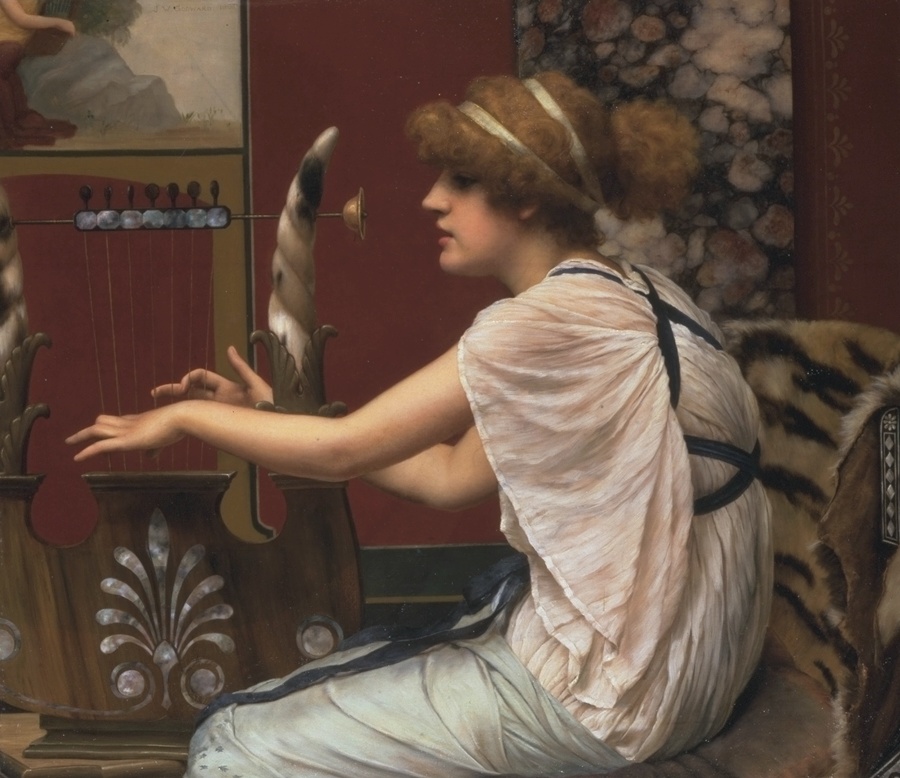
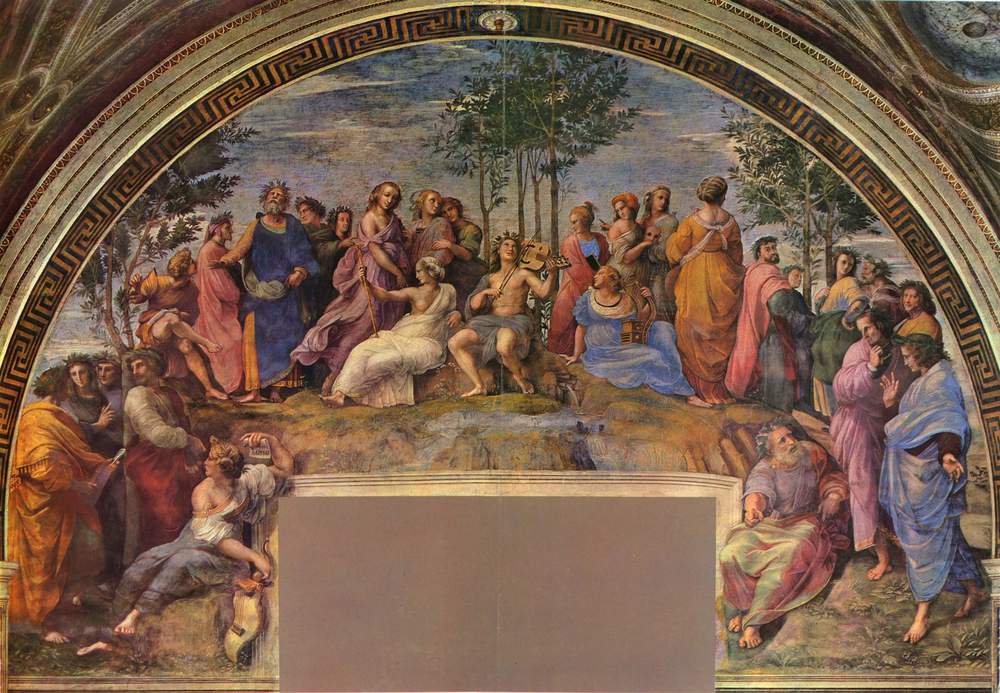
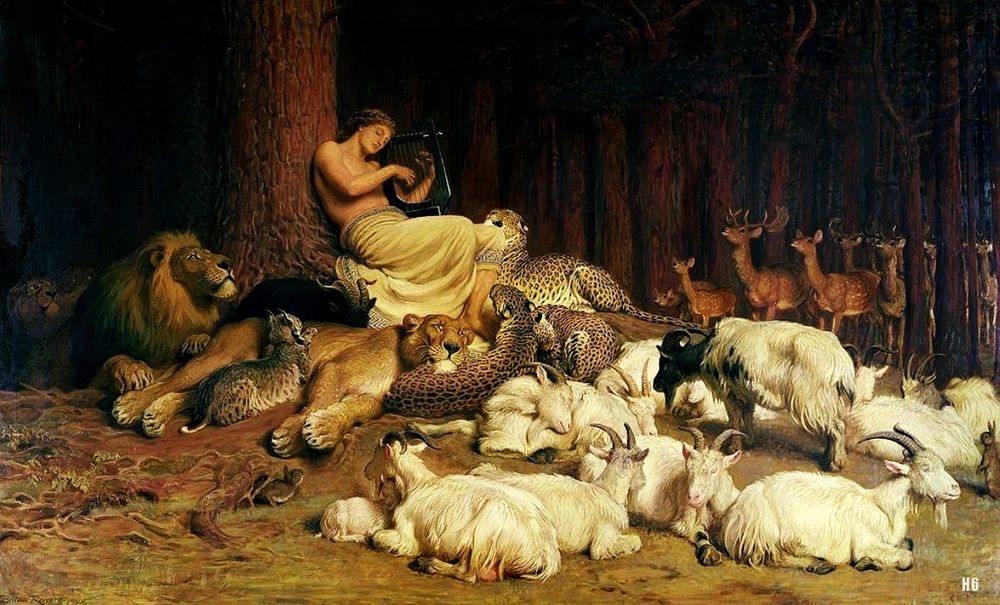
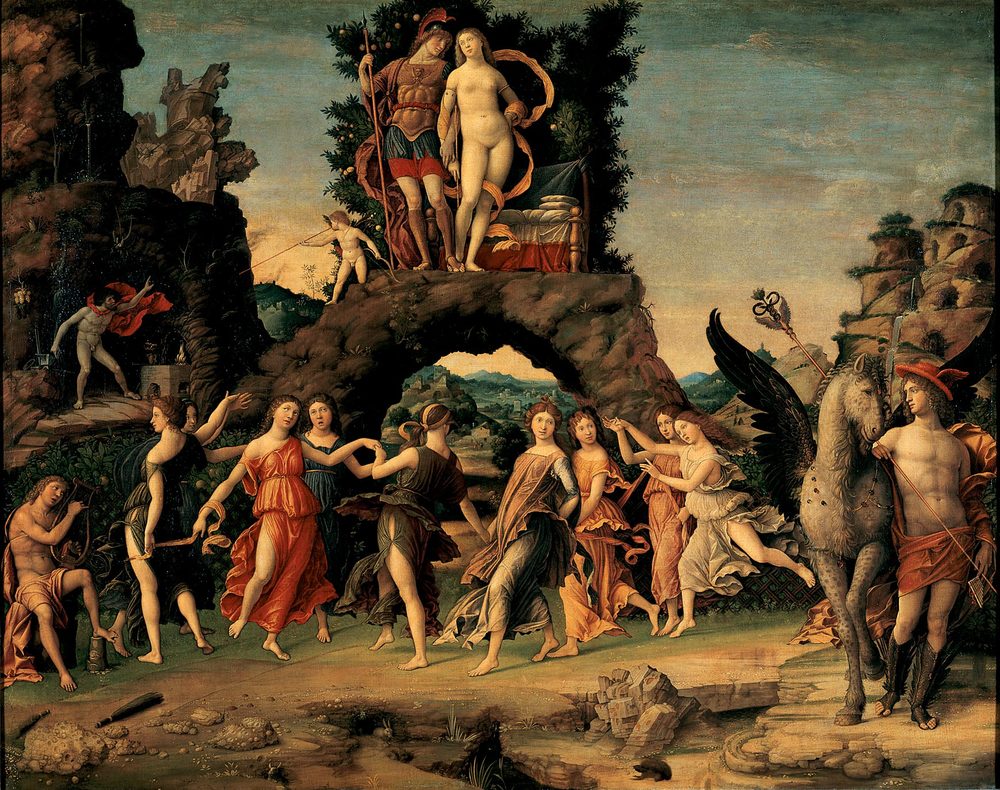
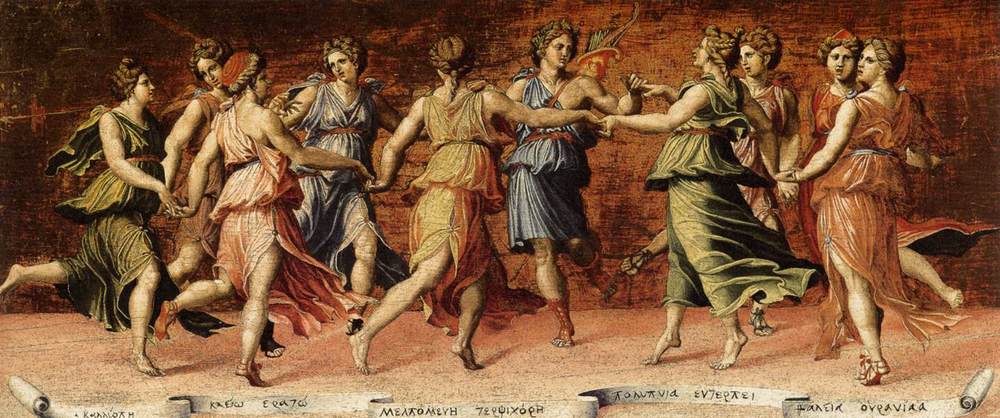
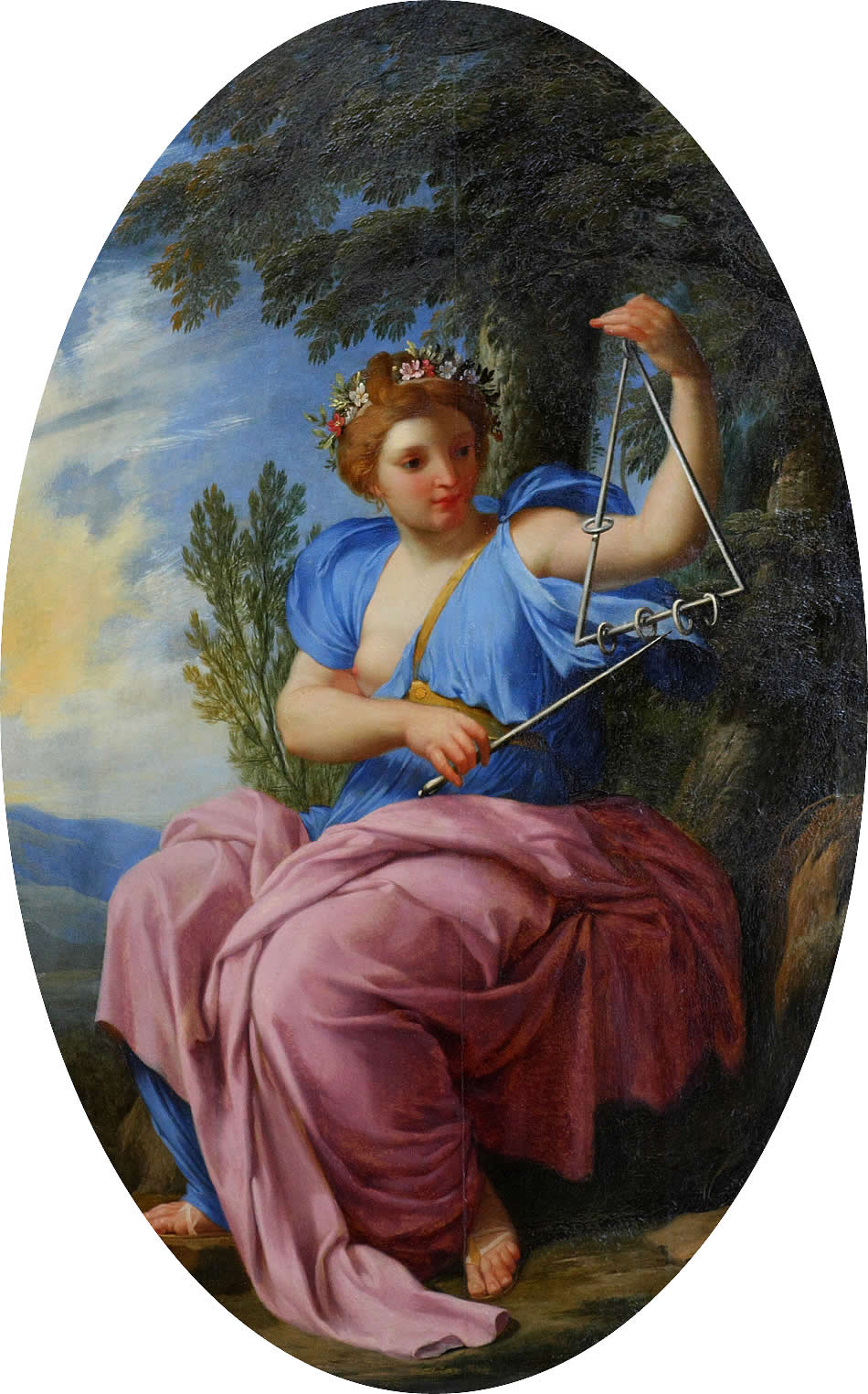
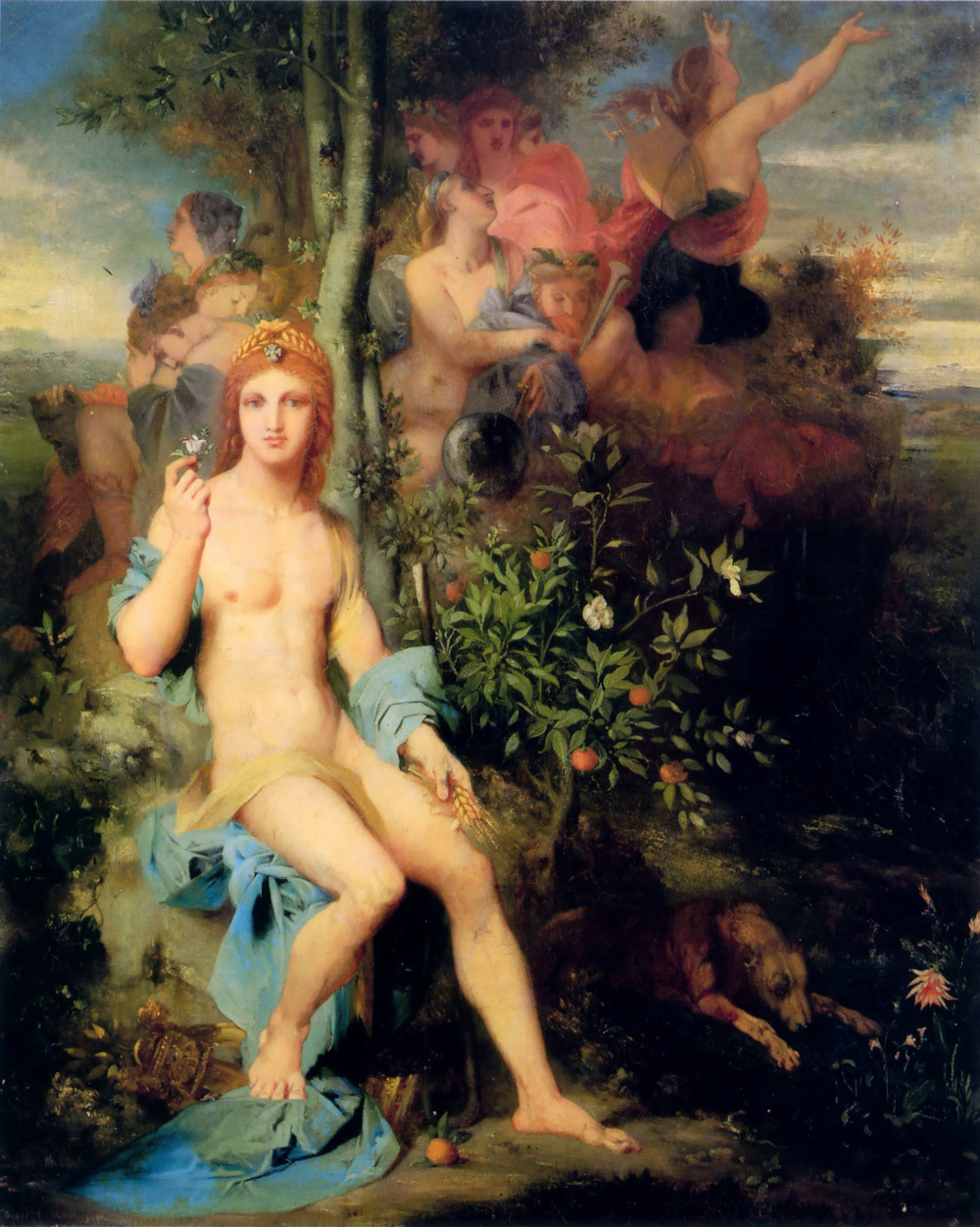
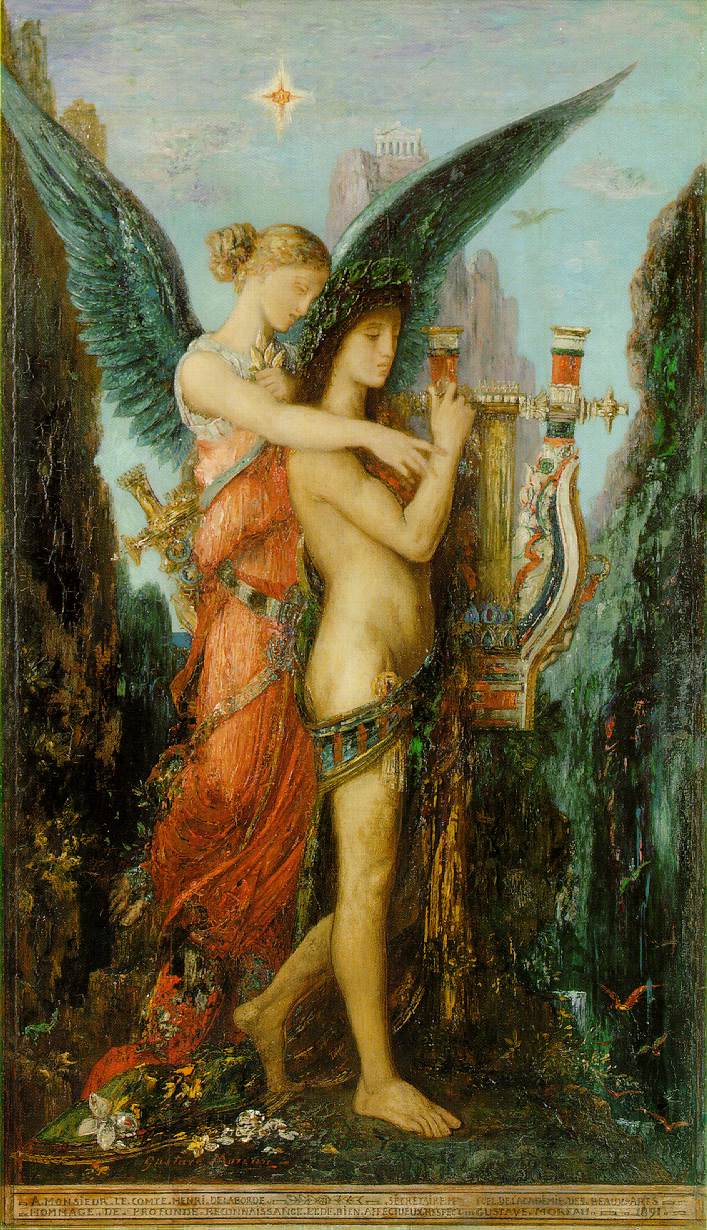
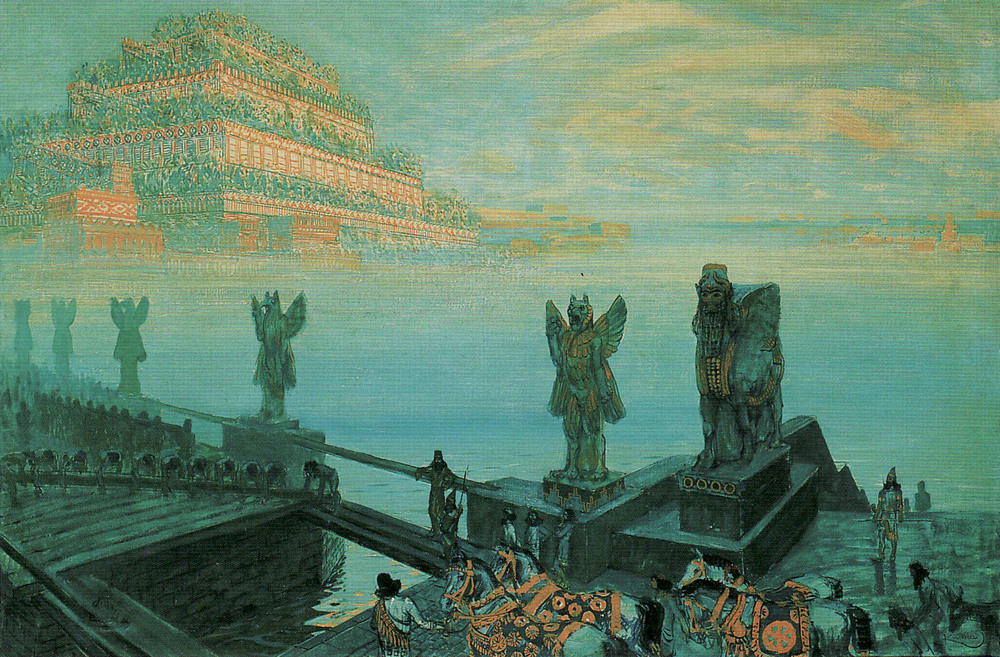
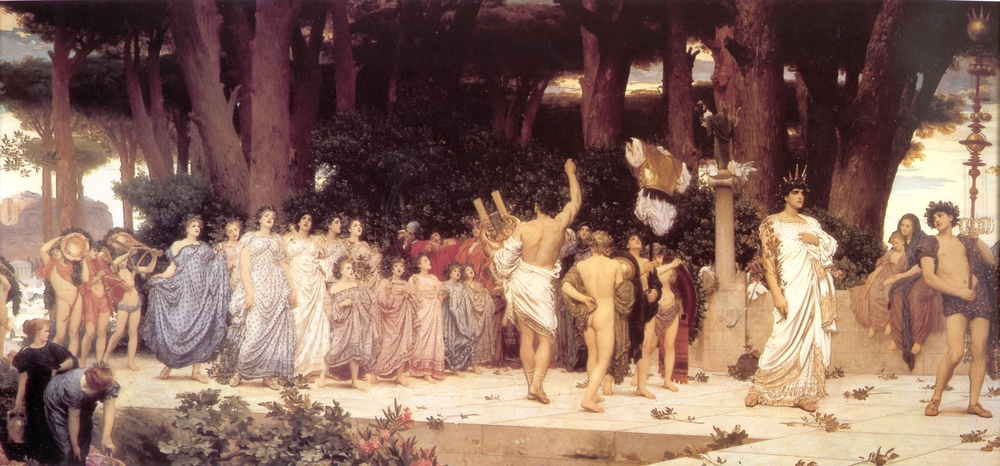

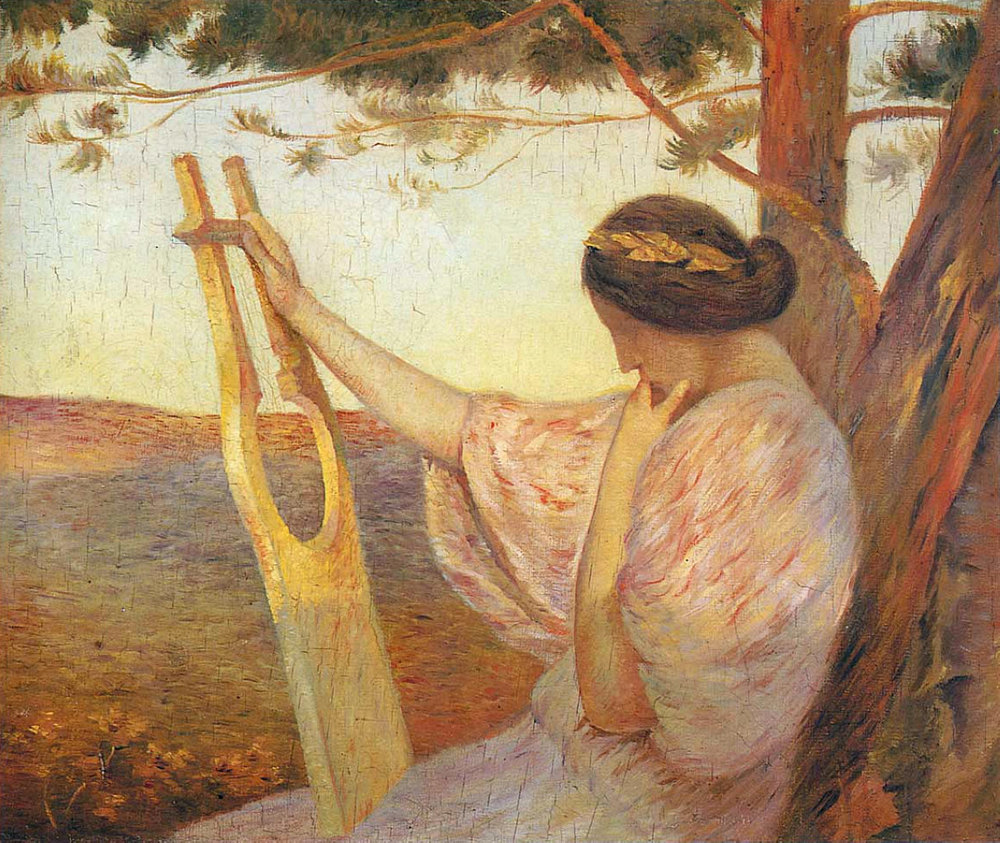
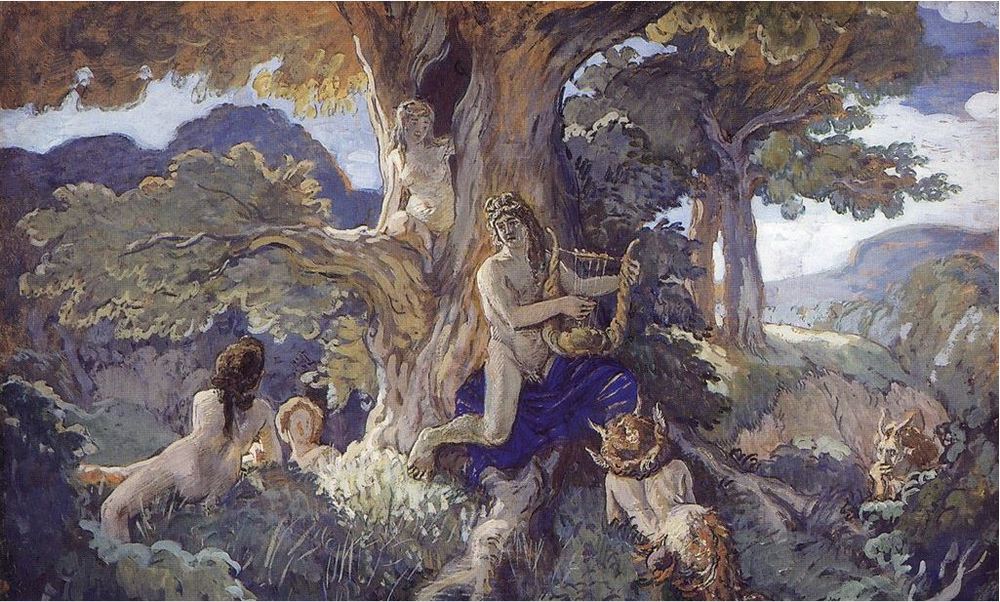
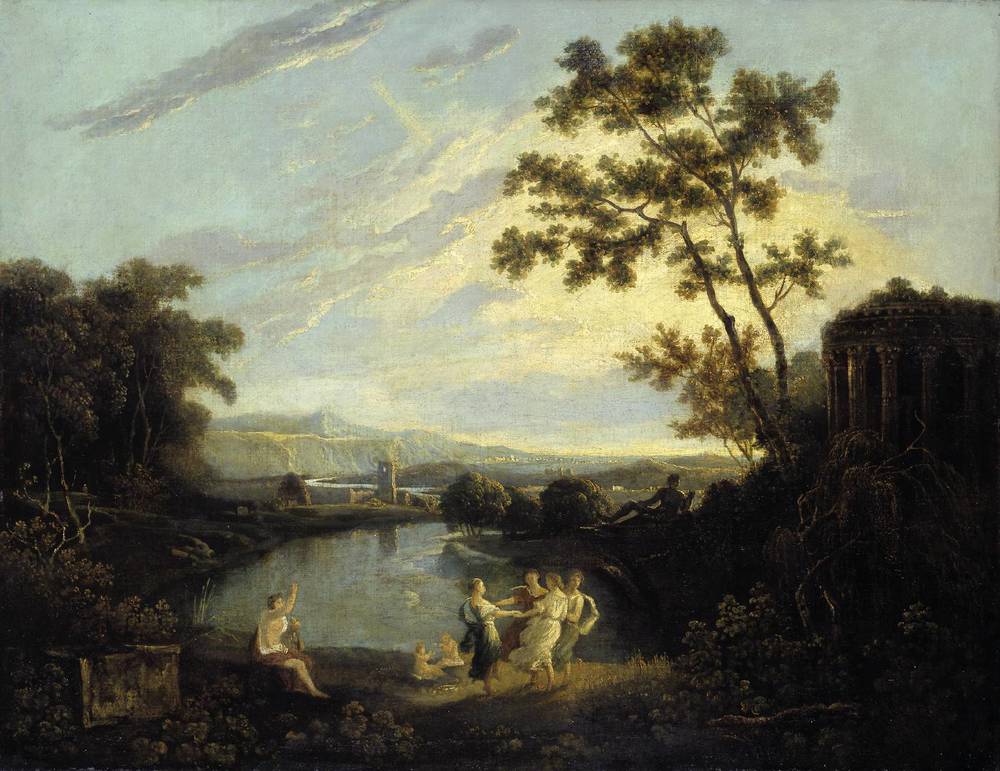
Recommended Recordings:
- MUSIQUE DE LA GRÉCE ANTIQUE [The Music of Ancient Greece]. Atrium Musicae de Madrid, Gregorio Paniagua. Arles, France: Harmonia Mundi s.a., 1979
- VIBRATION by Shulamit & The Drepung Gomang Buddhist Monks © Copyright – Soulsongs Inc. & Drepung Gomang Monks / Soulsongs Publications, 2001
- THE PASSION OF REASON. Five centuries of ‘scientific’ music. Sour Cream Ensemble, recorded in June 1993 and July 1994, Glossa Platinum Series. Heidelberg, Germany : Note 1 Music GmbH, 2013
- SYMPHONIES OF THE PLANETS. NASA Voyager Recordings, vols. 1-5, 1992
Interesting Websites:
Comments (1)
Maria Danova Pending Awaiting Moderation
Heinrich Heine, Der Apollogott: 2
Aus Romanzero, Gedichte, 1851
»Ich bin der Gott der Musika,
Verehrt in allen Landen;
Mein Tempel hat in Gräcia
Auf Mont-Parnaß gestanden.
Auf Mont-Parnaß in Gräcia,
Da hab ich oft gesessen
Am holden Quell Kastalia,
Im Schatten der Zypressen.
Vokalisierend saßen da
Um mich herum die Töchter,
Das sang und klang la-la, la-la!
Geplauder und Gelächter.
Mitunter rief tra-ra, tra-ra!
Ein Waldhorn aus dem Holze;
Dort jagte Artemisia,
Mein Schwesterlein, die Stolze.
Ich weiß es nicht, wie mir geschah:
Ich brauchte nur zu nippen
Vom Wasser der Kastalia,
Da tönten meine Lippen.
Ich sang – und wie von selbst beinah
Die Leier klang, berauschend
Mir war, als ob ich Daphne sah,
Aus Lorbeerbüschen lauschend.
Ich sang – und wie Ambrosia
Wohlrüche sich ergossen,
Es war von einer Gloria
Die ganze Welt umflossen.
Wohl tausend Jahr’ aus Gräcia
Bin ich verbannt, vertrieben –
Doch ist mein Herz in Gräcia,
In Gräcia geblieben.«
http://www.textlog.de/heine-gedichte-gott-musika.html
Translation of the first two stanzas by Hal Draper:
I am the god of music, I,
Beloved by lads and lasses,
My temple under Grecian sky
Stood on Mount Parnassus.
I often sat in times gone by
Upon Parnassus Mountain
Where cypress shades and shimmers vie
Beside Castalia’s fountain
…
Wenn Worte aufhören, beginnt die Musik.
When words leave off, music begins.
https://s-media-cache-ak0.pinimg.com/736x/e7/cd/17/e7cd17a3bd1c19c4192ae6a03d1b4d97.jpg